Worksheets Skeletal System
The skeletal system is an intricate network of bones that provides structure, support, and protection to our bodies. Whether you're a teacher looking for educational materials to engage your students or a student eager to learn about the inner workings of the human body, worksheets dedicated to the skeletal system can be a valuable resource. These worksheets focus on various aspects of the skeletal system, helping learners understand its functions, parts, and how it works together with other systems in the body.
Table of Images 👆
More Other Worksheets
Kindergarten Worksheet My RoomSpanish Verb Worksheets
Cooking Vocabulary Worksheet
DNA Code Worksheet
Meiosis Worksheet Answer Key
Art Handouts and Worksheets
7 Elements of Art Worksheets
All Amendment Worksheet
Symmetry Art Worksheets
Daily Meal Planning Worksheet
What is the skeletal system?
The skeletal system is the framework of bones and cartilage that support and protect the body, as well as aid in movement and provide structure. It consists of the bones of the body, including the skull, spine, ribs, and limbs, as well as joints, ligaments, and tendons that connect the bones together. The skeletal system also plays a role in storing minerals, producing blood cells, and regulating the body's calcium levels.
How many bones are in the human body?
There are 206 bones in the adult human body.
What are the main functions of the skeletal system?
The main functions of the skeletal system are to provide support and structure to the body, protect internal organs, assist in movement by providing a framework for muscles to attach to, produce blood cells in the bone marrow, store minerals such as calcium and phosphorus, and help regulate mineral balance in the body.
What are the types of bones in the skeletal system?
The skeletal system consists of five main types of bones: long bones (e.g., femur, humerus) for support and movement, short bones (e.g., carpals, tarsals) for stability and weight-bearing, flat bones (e.g., skull, ribs) for protection and muscle attachment, irregular bones (e.g., vertebrae, facial bones) for various functions, and sesamoid bones (e.g., patella) for reducing friction and enhancing joint movement.
What is the structure of a typical bone?
A typical bone consists of several distinct layers, including the outer periosteum, the hard and dense compact bone found beneath it, the spongy or cancellous bone which contains bone marrow, and the innermost endosteum lining the marrow cavity. The compact bone is made up of tightly packed layers of mineralized matrix, while the spongy bone network is less dense with trabeculae that provide support and contain bone marrow. Overall, bones are composed of cells (osteoblasts, osteocytes, and osteoclasts) embedded within a matrix of collagen fibers and minerals like calcium and phosphorus, giving them their strength and resilience.
What is the role of cartilage in the skeletal system?
Cartilage in the skeletal system serves as a flexible connective tissue that provides support, allows for smooth joint movement, and also aids in absorbing shock. It acts as a cushion between bones, preventing them from rubbing against each other and wearing down. Additionally, cartilage plays a crucial role in the growth and development of bones during childhood and serves as a mold for bone formation in areas such as the growth plates.
How do bones grow and develop?
Bones grow and develop through a process known as ossification, which involves the formation of new bone tissue and the reshaping of existing bone. During childhood and adolescence, a specialized type of cell called osteoblasts deposit mineralized collagen fibers onto a framework of cartilage, gradually replacing it with hardened bone. This process continues until early adulthood, when bones reach their peak mass and density. Factors such as nutrition, hormones, and physical activity play a significant role in bone growth and development.
What is the importance of bone marrow?
Bone marrow is crucial for the production of blood cells, including red blood cells that carry oxygen, white blood cells that fight infection, and platelets that help with blood clotting. It also plays a vital role in the immune system by producing immune cells such as lymphocytes. Without healthy bone marrow, the body cannot function properly and is at risk of developing various disorders like anemia, leukemia, or immune deficiencies. Additionally, bone marrow can also serve as a potential source of stem cells for transplantation in the treatment of certain diseases.
What are the common skeletal disorders or diseases?
Common skeletal disorders or diseases include osteoporosis, arthritis, scoliosis, osteoarthritis, rheumatoid arthritis, and fractures. These conditions can affect the bones, joints, and surrounding tissues, leading to pain, stiffness, decreased mobility, and an increased risk of fractures. Proper diagnosis and management by healthcare professionals are essential for individuals with these conditions to maintain their skeletal health and overall well-being.
How can we maintain a healthy skeletal system?
To maintain a healthy skeletal system, it is important to consume a balanced diet rich in calcium and vitamin D, engage in weight-bearing exercises regularly to strengthen bones, avoid smoking and excessive alcohol consumption, and ensure to get an adequate intake of essential nutrients like magnesium, phosphorus, and vitamin K. Additionally, practicing good posture, avoiding falls, and seeking medical advice for any underlying conditions that may affect bone health are also crucial in promoting overall skeletal health.
Have something to share?
Who is Worksheeto?
At Worksheeto, we are committed to delivering an extensive and varied portfolio of superior quality worksheets, designed to address the educational demands of students, educators, and parents.

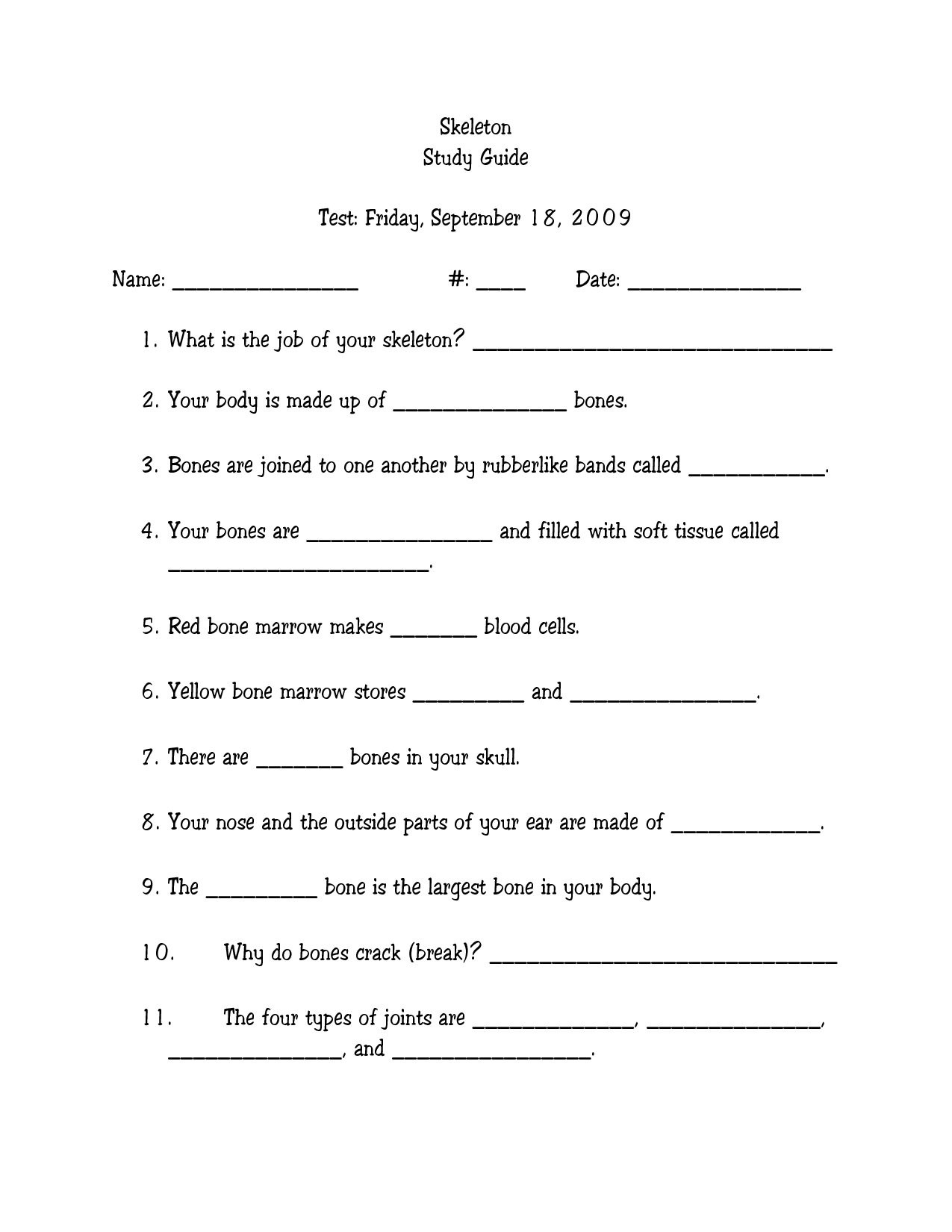



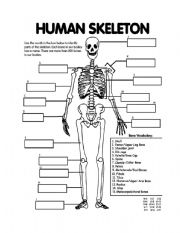
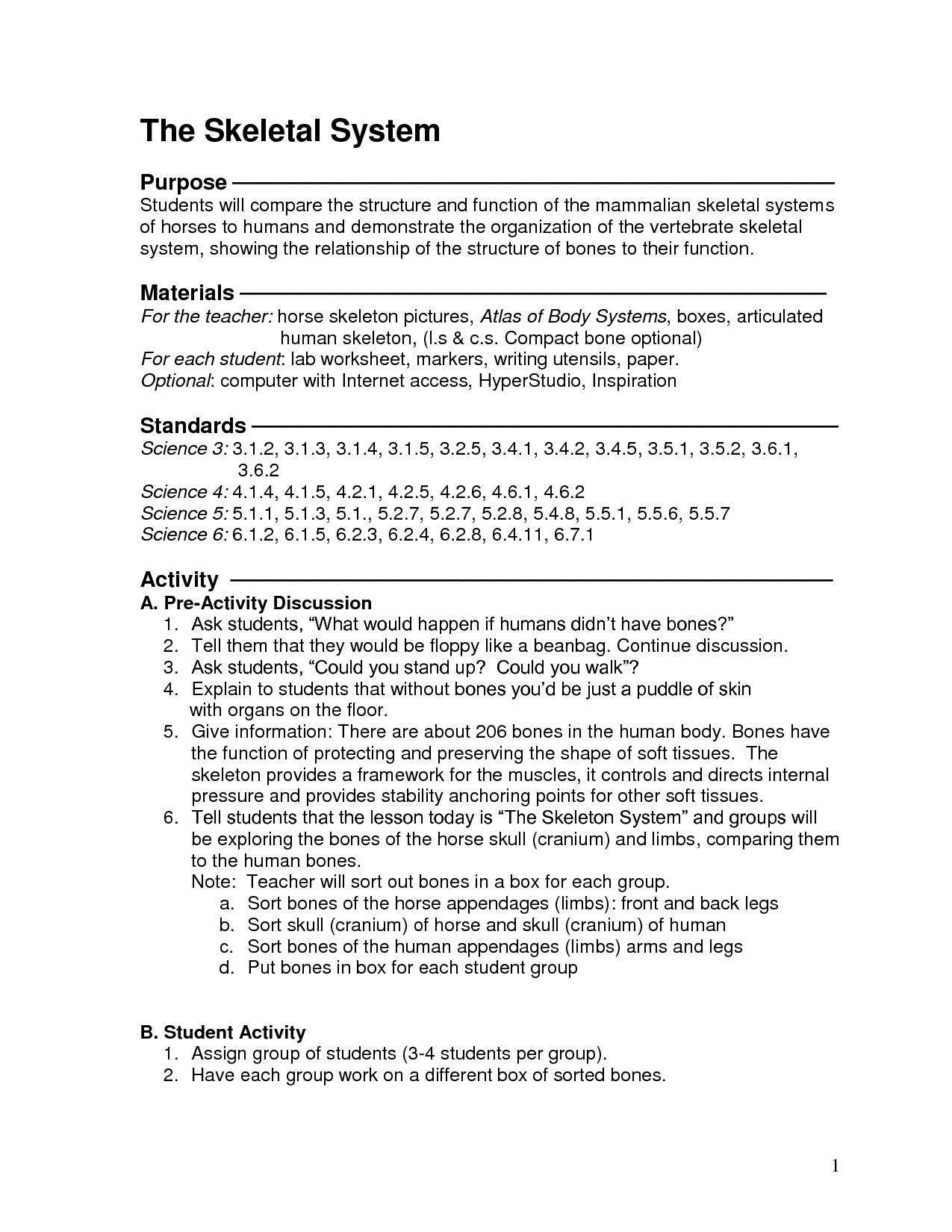
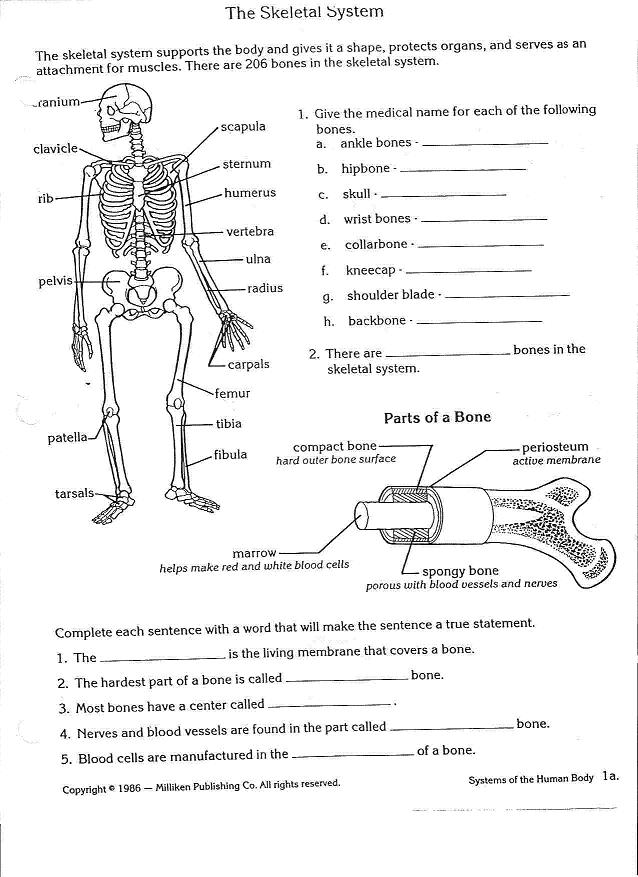

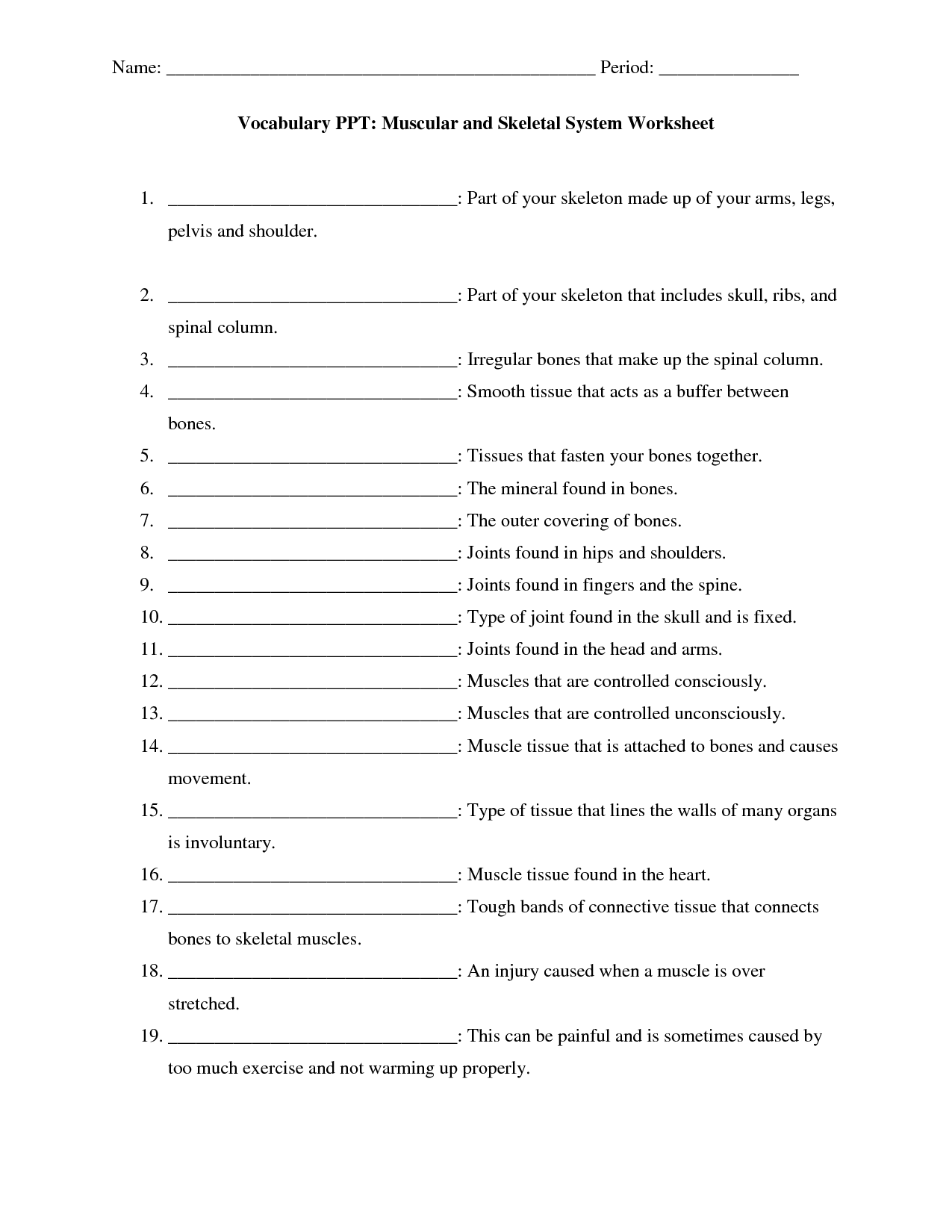
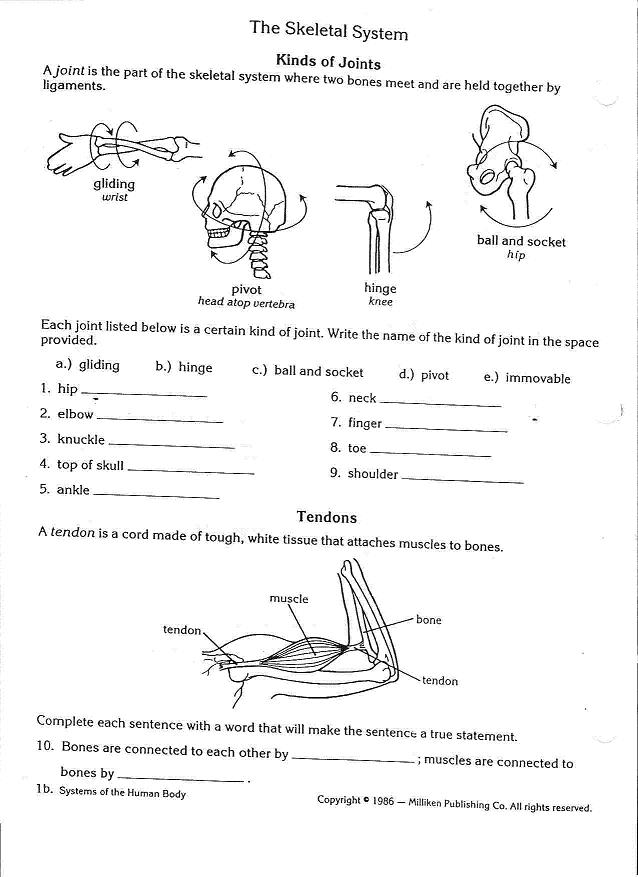
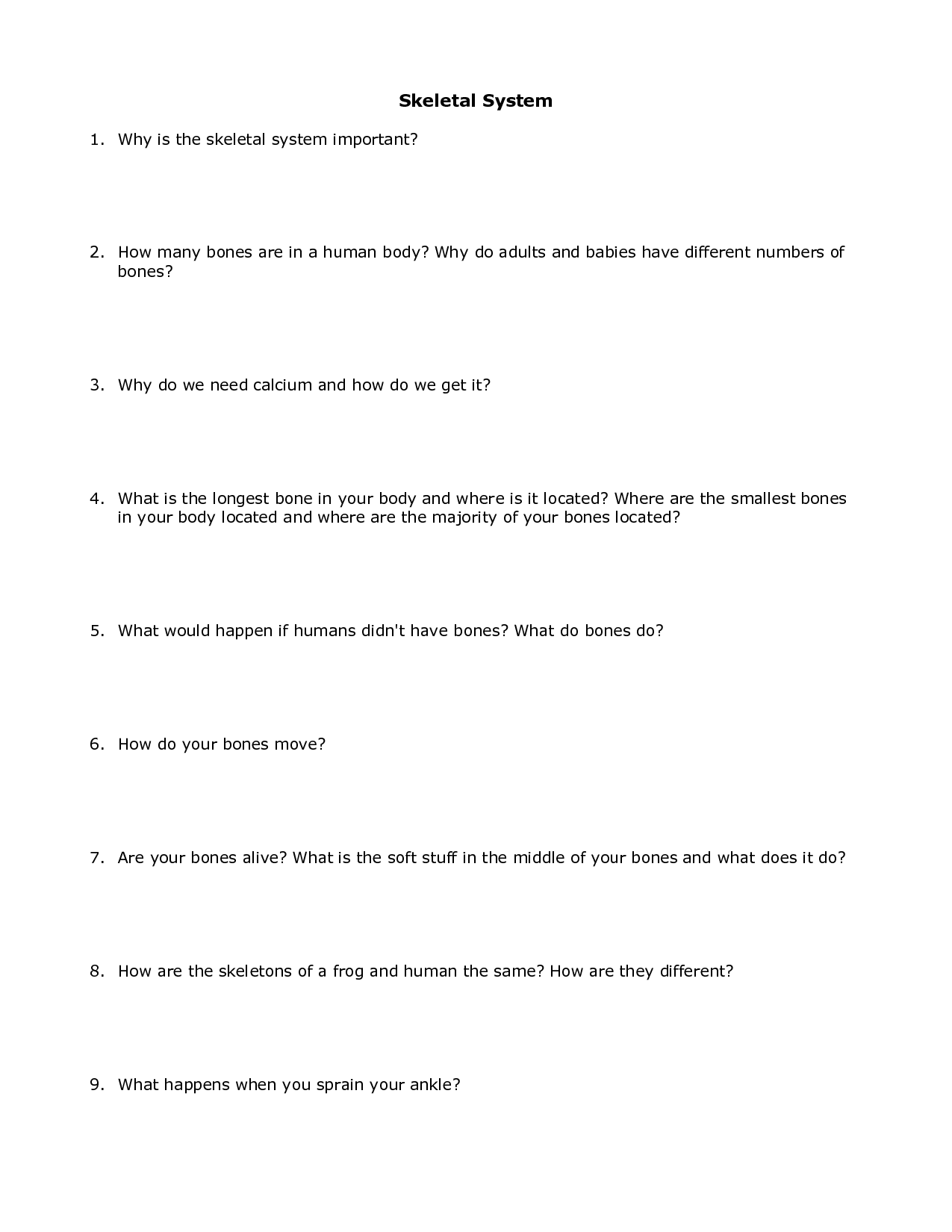
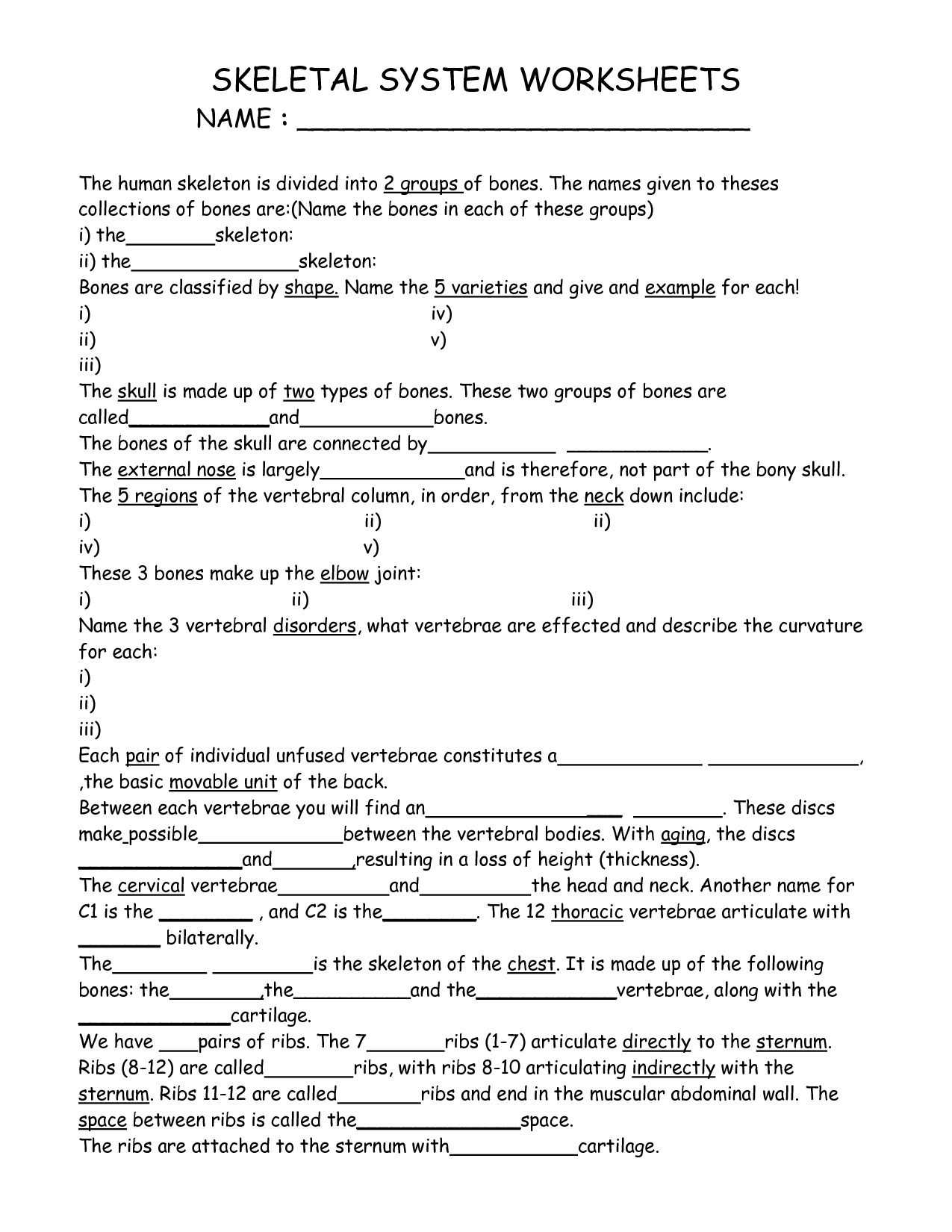
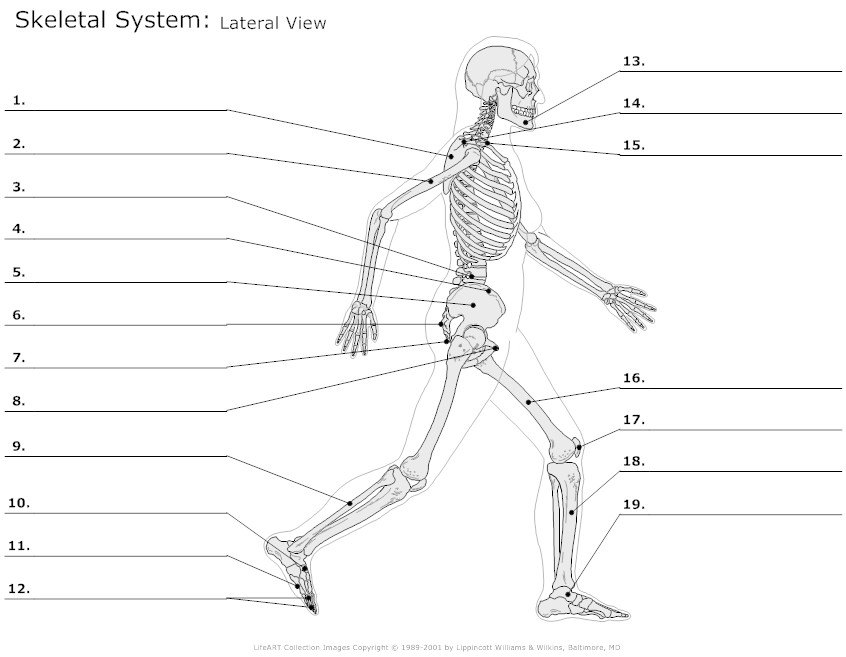

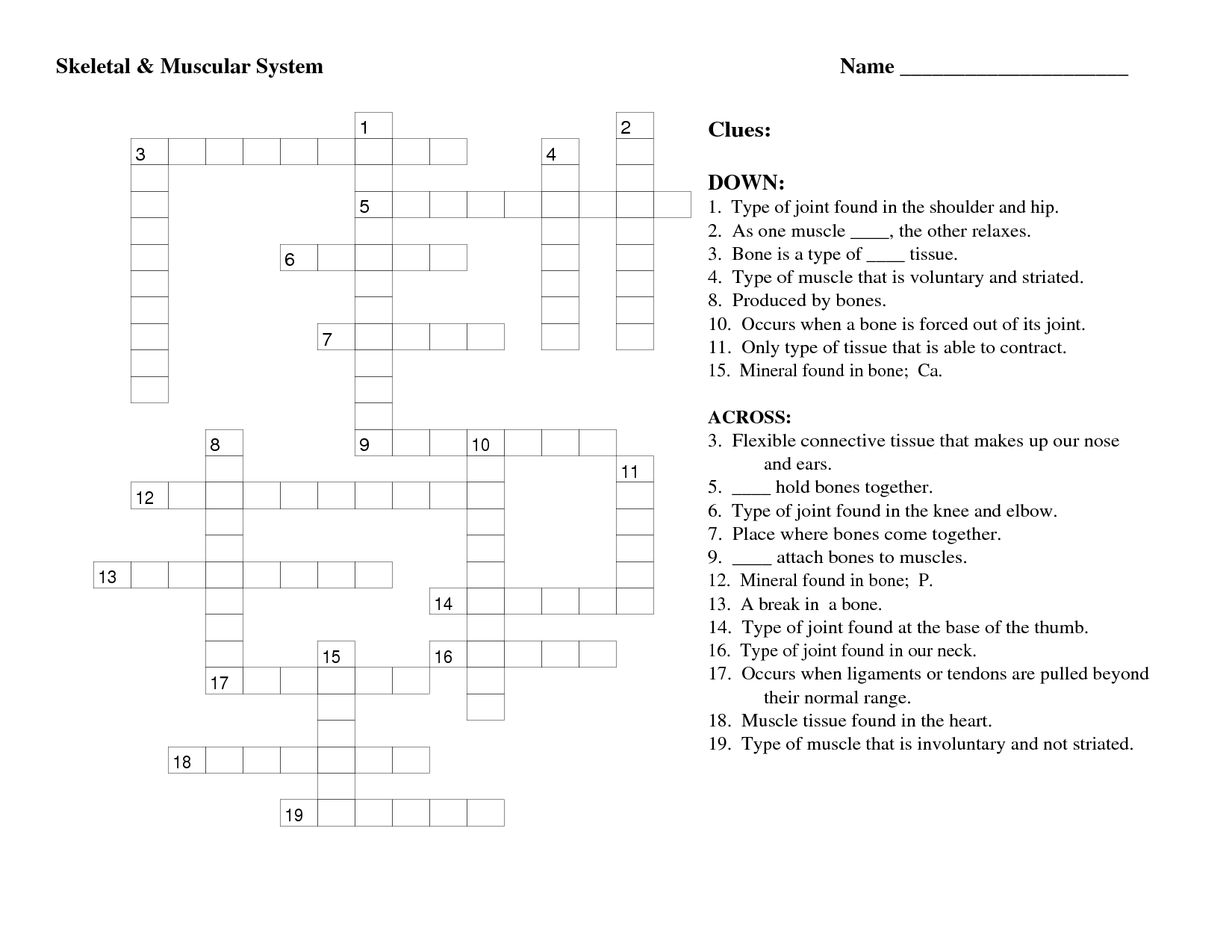
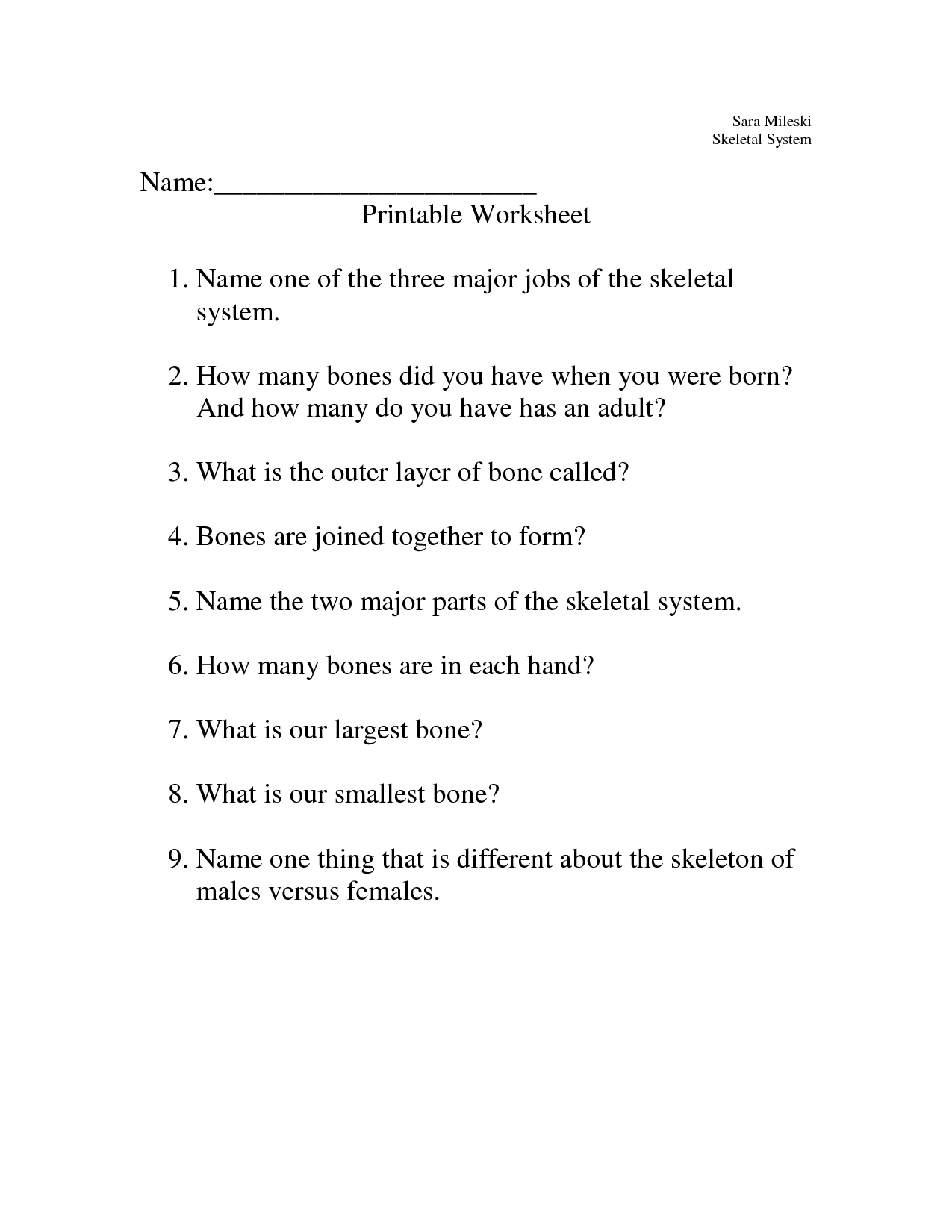
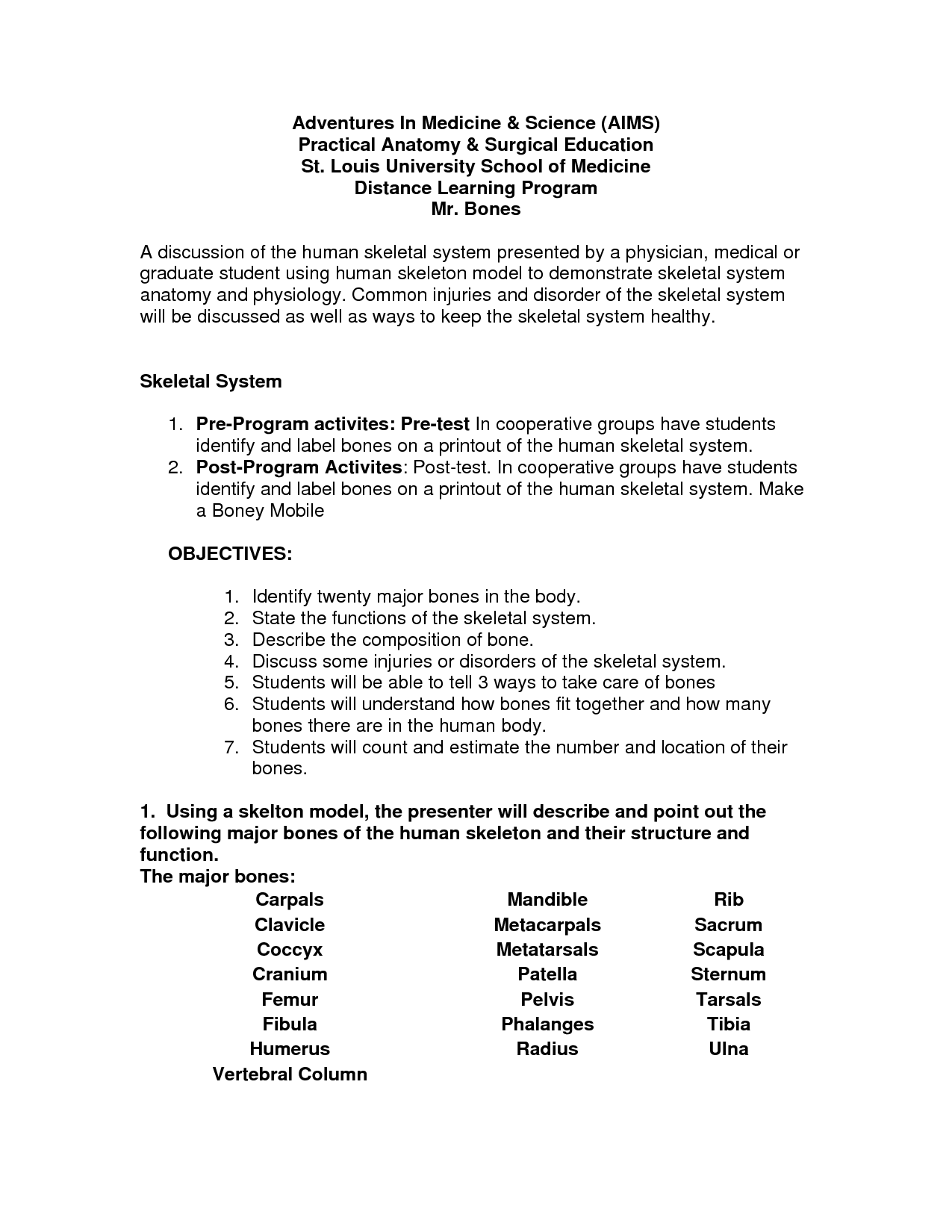
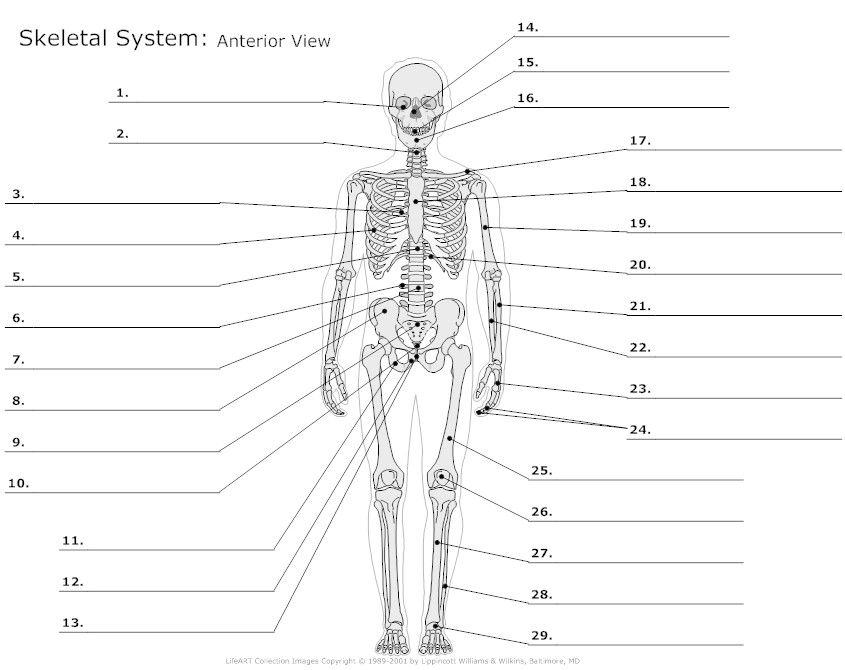
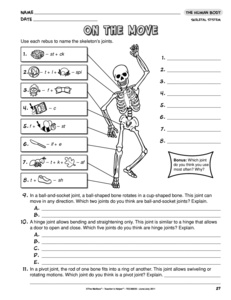














Comments